Vulnerability in the time of Covid by Robyn Hunt
This piece was performed by Robyn at the Crip the Lit event at Verb Festival 2020. Crip the Lit promotes, encourages and amplifies the work of writers with lived experience of disability. The provocation for the event was ‘Vulnerability’ - as we all know, it's a word of the times – but then, just to mix it up a bit, we threw in some random words which is how we got the intriguing session title of: Vulnerability, fluorescent islands and resilient teabags. Every writer has approached our theme in their own style. As you read the work (selected pieces published from the event) you might also catch those random words subtly inserted in some pieces and not so subtly in one...
Vulnerability is problematic. It’s a loaded, misunderstood, misused, even mispronounced word. It’s applied in disempowering ways by people in positions of power to those with less power, including disabled people
It’s part of an ableist world view during a pandemic as at any other time. Of course many of us are in at-risk communities, despite the angry insistence of some older people that although they’re over seventy they are fit and healthy, not like those others. At the best of times, and now is not one of them, vulnerability is a label never lightly given or received. I prefer “at risk.” The question can then be asked: What is that risk?
Older people and those with pre-existing conditions, many disabled people, are most at risk of covid. In the early days of the pandemic there were ominous inferences by some that “the vulnerable,” might have to be sacrificed for the nation’s general economic wellbeing. Happily the disastrous mistakes of some other countries have been avoided here so far, although older and disabled people still remain invisible, as usual.
Of course some disabled people are more at risk. Insecurity about a lack of PPE for people who needed personal care came early. There was anxiety about food security for others living alone, and Deaf people found that masks make Signing difficult. Lip reading is impossible. People with compromised immune systems were cautions about going out, even at lower alert levels. Those with particular health conditions are more susceptible. Some disabled people simply felt forgotten.
There were problems with access to information. Our own communities worked hard to help. The mobile tracing app was inaccessible. Ubiquitous Zoom meetings can be overwhelming, stressful and exhausting. Like others I missed” sharing the air” face to face with family and friends.
Ironically some disabled people regularly at risk in their workplaces were, along with non-disabled people, finally able to work from home, never before having been allowed that accommodation.
Is vulnerability a social construct around disability? The answer is equivocal. Vulnerability, the risk some experience, may be higher or different, but many disabled people already have clear insight into their risks, and resilient responses. Perceived weakness masks steely strength.
Risk is situational and circumstantial. Everyone is at risk in accident, disaster, earthquake, storm or fire, as well as in a pandemic. A pandemic doesn’t preclude other risks.
Poet David Whyte describes vulnerability as “The dance of control and surrender” During a national and international crisis that dance is intimate, intricate, problematic, dangerous. No-one can avoid the imperative to dance.
For me, a winter cold became a wheezy cough. Only a phone consult with my doctor allowed. I took the covid test. I took it again after a spring wheezy cold turned into a chest infection.
It’s hard to feel in control when you have a 6 in swab pushed up your nose. I'm glad that, while having the test the first time at least I forgot that the mummy-makers of Egypt are reported to have extracted the brains of their corpses through the nose. My first negative result came the next day. The second came the same day, Younger, less at risk, people’s tests took longer. The system worked.
“Be kind” is the covid mantra. To be kind we must be open, lay a little or a lot of ourselves bare, be vulnerable in the best sense. Kindness isn’t weakness. It might bring emotional exposure and risk. But also possibility, rich experience, good and bad. Exposure is always risky.
As with kindness, vulnerability isn’t weakness. Our vulnerability in being kind is part of the human experience of feeling, showing joy, empathy, happiness, grief and love. Our feelings are a deep part of our humanity.
Does that mean that we are all vulnerable in a pandemic? It does. Kindness means exploring the discomfort and self-acceptance needed to truly connect with others. By the end of lockdown that deeply human connection was needed most. Friendly teddy bears in windows brought comfort and connection as we all sail risky uncharted waters together.
At one pm we listened or watched the announcement from the Director General of Health in lockdown as if our lives depended on it. We craved guidance and navigation aids along with reassurance and good news.
In early lockdown the few runners and walkers skirted the edges of the footpath on The Terrace in Wellington nervously, barely looking at each other, uneasy islands in uncertain seas. Joyful birdsong in the still air, unchallenged by the roar of midday traffic, marked the absence of the usual patterns and markers of daily routine.
Disabled people don’t need to surrender to risk, or allow it to silence and oppress. We don’t have to accept the stale used tea bags of others’ perceptions and categorisation. We can begin afresh, on our own terms.
The very human ability to embrace vulnerability may help us all struggle together through this pandemic, by sheer humanity and power of compassion.
